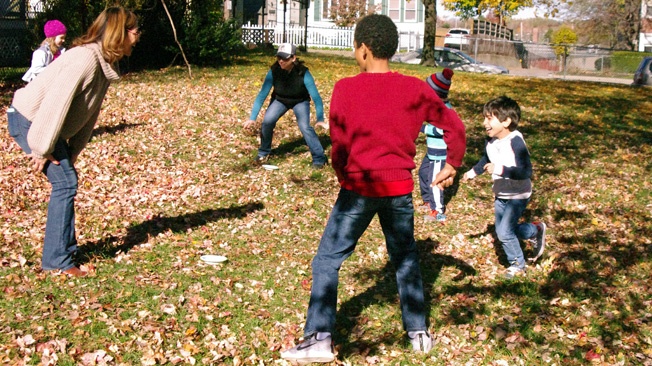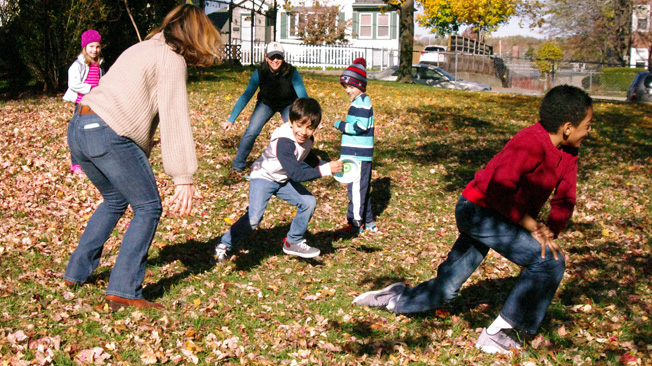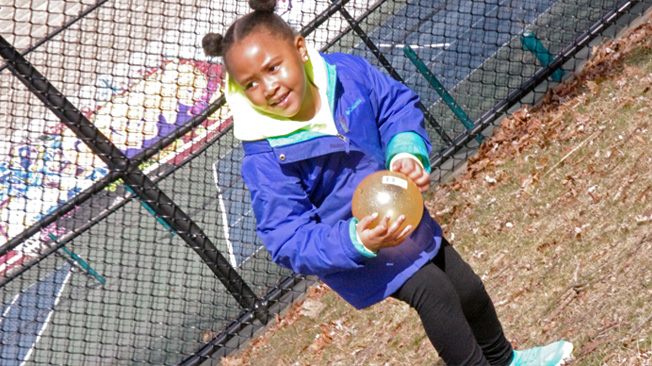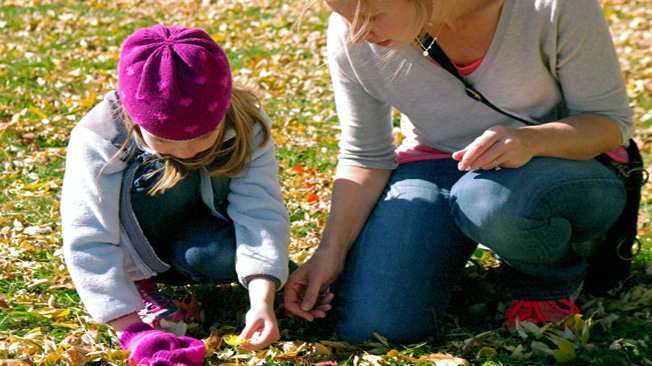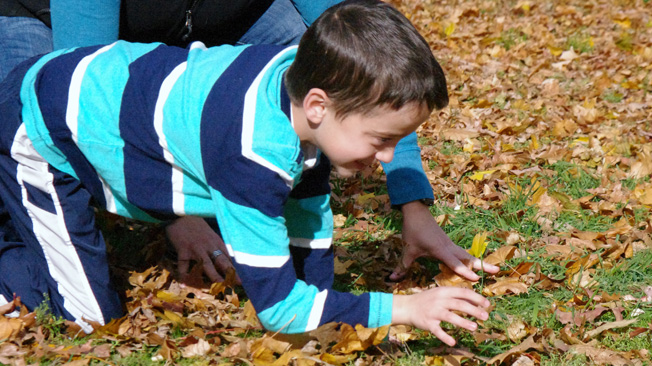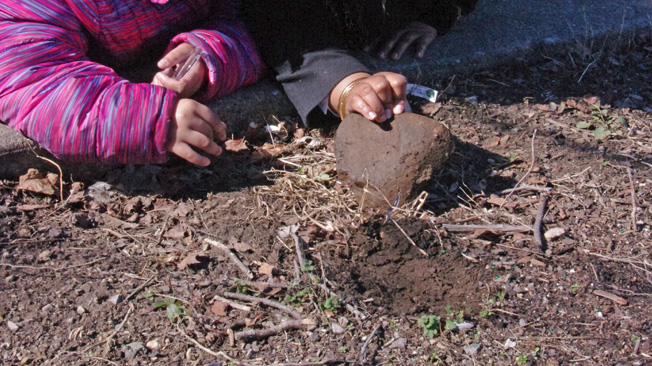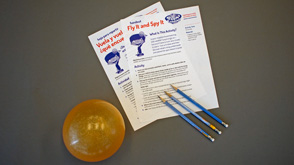Fly It and Spy It
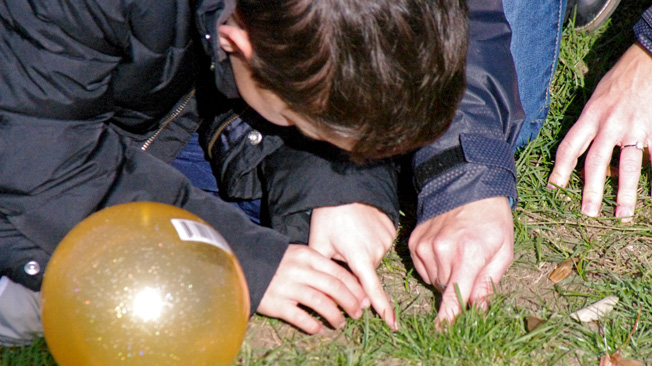
What Is This Activity?
Is your neighborhood teeming with wildlife? Surprisingly, yes—but families will have to look very closely to see it. They will discover what’s living under their feet and above their head, and then imagine seeing the world from the viewpoint of an ant!
Introduction
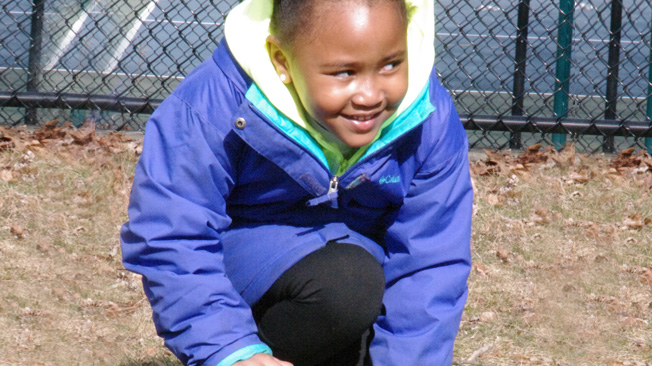
Learning Goals
Big Science Idea:
- Animals live in lots of places where they find food, water, shelter, and space to survive.
Skills kids will use to investigate it:
Model the defense and attack behavior of ants
Predict, observe, compare, and document where animals live based on survival needs
Model and communicate information about animal behavior and survival
How Do You Get Ready?
Read the activity and gather the materials.
Print out one “Fly It and Spy It” handout per family.
Scout out a space that has soil and grass and other plants, such as a park or another unpaved area.
Optional: Before starting the activity, place slices of fruit and dampen soil around the fruit in a few spots to attract animals.
Troubleshoot safety concerns (traffic, poison ivy, sharp objects, etc.).
Look up the estimated population of your city or town (for Wrap-Up).
Optional: Review all the “Animal Fact Cards” and select, print, and cut out cards that apply to your region.
If you don’t plan to show the “Wild, Wild Life” video that is paired with this activity on the website, watch it ahead of time and jot down concepts to share with families during the activity.
Warm-up 5–10 minutes
(Science Skills: Model the defense and attack behavior of ants)
Raider Ants! Kids play “Soldier Ants” who defend their family’s shelter, a “Nest” (ball or paper plate), while trying to raid other Nests.
Adults play “Queen Ants” who don’t defend or raid. They stay at their family Nest to give advice and supervise. The game works best with three or more nests. If necessary, combine families so that each nest starts with at least two children—one to raid and one to defend. If you don’t have enough kids, assign an adult to defend each nest and have kids focus on raiding.
Each family places their Nest anywhere on the ground. They should strategize and pick an area that is easy to defend but close enough to other nests to raid them.
The game begins on your signal.
To raid another Nest: One or more Soldier Ants try to grab a Nest without being tagged. If they succeed, the two “colonies” join at the raiders’ Nest and play the rest of the game together.
To defend the family Nest: Soldier Ants tag raiders to send them back home, empty-handed. The raiders must return to their Nest before they can stage another raid.
The game ends when everyone is in the same Nest—the one that raided and defended the best! Wonder aloud: Why do ants raid other ants? Why do they have to defend their nests? Explain that all animals need shelter to survive. Shelter provides a safe place to hide from enemies, to store food and water, and to raise young.
Ask families to briefly describe what strategies worked best. (Where to place the Nest and whether to have more defenders or more raiders, for example.) Play again, time permitting.
Activity 15–25 minutes
Fly It and Spy It
(15-25 minutes)
(Science Skills: Predict, observe, compare, and document where animals live based on survival needs)
Look around and wonder aloud: Where are animals living around us? Explain that animals can be tough to find because they can move and hide. But they’re out there! One way to find them is to “follow the food”—or the water, or the shelters that they need to survive.
Ask: What do you need to survive? How and where do you find those items? Point out that all animals (including people) have the same survival needs: Food, water, shelter, and space. So if you want to find animals, look for those four things.
Predict: Where are animals likely to be right now?
near plants or away from them?
in an open area or under a tree?
in sun or in shade?
in grass, in soil, or on pavement?
Where else? The activity will help families explore answers.
Pass out the “Fly It and Spy It” handout and review the directions with families.
Give each family a ball and a pen or pencil (if they don’t already have one from the warm-up activity) and have them fly and spy animals in the area.
Circulate among the families to encourage and support them. If they have spotted animals, ask what the critters are doing. (Hunting for food, eating, moving to a new place, resting, nesting, etc). If they’re not finding much, talk about possible reasons why (park is busy, weather is bad, some animals more active at night, etc.) and tell them to throw the ball to a different spot until they do. If you placed fruit slices around, direct them to those areas.
Ant’s Eye View
(10–15 minutes)
(Science Skills: Model and communicate information about animal behavior and survival)
Ask the group to imagine that we have all shrunk to the size of ants! Have kids crawl close to the ground and describe what they might see if they were an ant. Share a few pretend observations to make it more fun: Wow, that grass blade looks like a tree! There are thousands of us ants down here! Wonder aloud:
- What does a pebble look like?
- What do spiders look like? Pigeons? Humans?
- What’s your biggest danger?
- Where is a safe place to dig a nest (the job of worker ants)?
- How can you defend the nest (the job of soldier ants)?
- Where do you find food and water (the job of scout ants)?
- How will you feed and protect the babies? (the job of nurse ants)?
Share this cool fact: The nest of one queen ant can be deeper than you are tall (five feet or more) and have a million or more ants! Compare that number to the population of your city. Ask: What would it be like to live in a nest like that?
Ask kids to kids imagine being a larger animal—a hawk, for example. Have them copy you as you fly around and screech like a hawk. What’s different? How do spiders, pigeons, and humans look?
Repeat with different animals as often as the families are engaged and you have time. Some suggestions: Squirrels, inchworms, grasshopper. Optional: Use your regional Animal Fact Cards.
Wrap-up 5 minutes
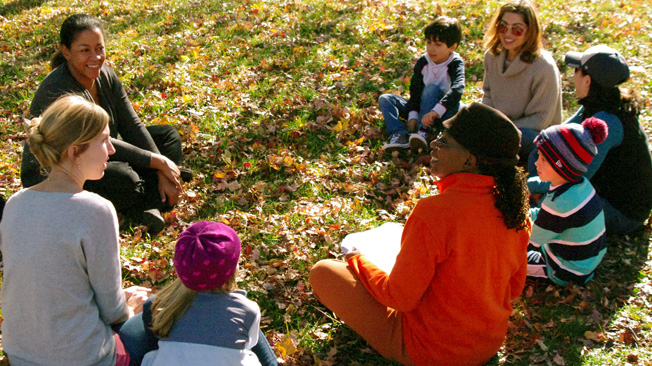
(Science Skills: Communicate information about animal behavior and survival)
Ask for a show of hands: Is everyone back to normal size? (A joke.)
Have the families discuss what they found.
Gather on grass and tell kids to look at their feet. Ask: What animals might be living under your feet right now, in the soil? (Worms, roly-poly bugs, ants, centipedes, etc.) What do you think they are doing? (Surviving—searching for food or water, eating, digging a shelter, hunting, defending themselves, etc.)
Encourage families to take home the “Fly It and Spy It” handout to repeat the activity in their neighborhoods and point out the “Explore Some More” activities. If you wish, give them “Explore Animals Around You” handout to provide them with more ideas on how to continue investigating animals together.
Explore Some More
Pigeon Love
Pigeons love cities and depend on humans for food and shelter. Encourage families to follow and observe a pigeon (or other bird). How does it interact with people and the things people built or made? Have kids pretend to be a pigeon! As families walk on the sidewalks, tell them to look for ways to survive: Where could you sleep tonight? Where can you find food? Water? A place to hide from hungry hawks?

